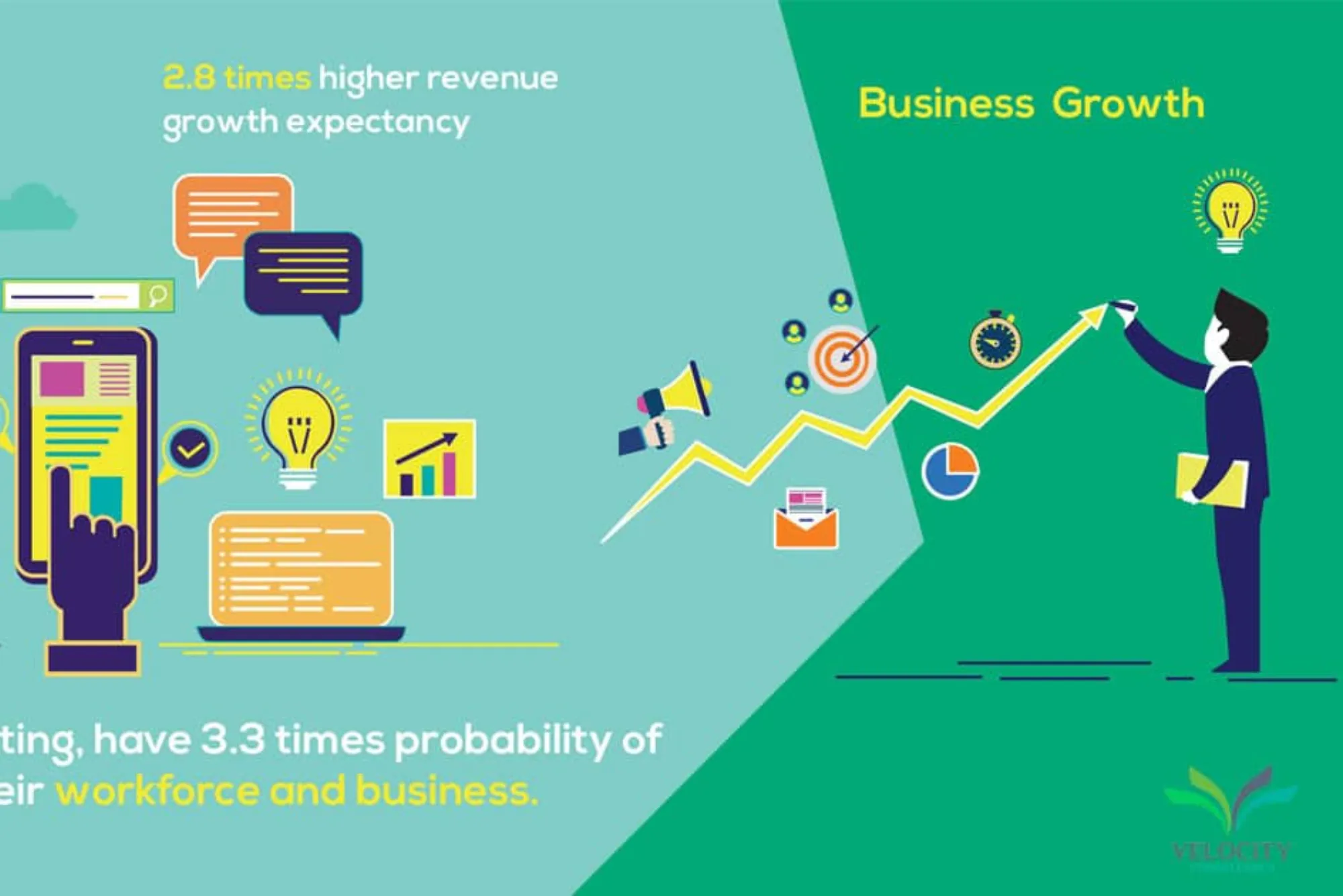In today’s rapidly evolving digital landscape, businesses must adapt to stay competitive. One of the most effective ways to do this is through digital marketing, a comprehensive approach that leverages online platforms, digital technologies, and data-driven strategies to promote products or services. Unlike traditional marketing methods, digital marketing allows businesses to reach a global audience, engage with customers in real-time, and track the performance of their efforts with unparalleled precision.
Digital marketing encompasses a wide range of activities, from search engine optimization (SEO) and content marketing to social media and pay-per-click (PPC) advertising. By understanding the various components of digital marketing and how they work together, businesses can create a cohesive strategy that drives growth and delivers measurable results. This article will explore how to effectively implement digital marketing for your business, providing insights into key strategies, examples of successful campaigns, and practical advice for getting started.
One of the fundamental questions often asked is, what is digital marketing? Explain with examples. Digital marketing is essentially the practice of promoting products or services using digital channels such as websites, search engines, social media, email, and mobile apps.
For example, a small business might use social media ads to target specific demographics, driving traffic to their website and ultimately increasing sales. This approach not only allows businesses to reach a broader audience but also provides the tools to measure the impact of their efforts, making it easier to refine and optimize strategies over time.
Understanding the Key Components of Digital Marketing
To effectively leverage digital marketing, it’s essential to understand its key components, each of which plays a crucial role in reaching and engaging your target audience.
Search Engine Optimization (SEO) is the process of optimizing your website and content to rank higher in search engine results pages (SERPs). By improving your visibility in search engines like Google, you increase the likelihood that potential customers will find your business when searching for relevant keywords.
SEO involves a variety of tactics, including keyword research, on-page optimization, and link building. For example, by understanding what is digital marketing explain with examples, businesses can create content that addresses common search queries, improving their visibility and driving organic traffic to their site.
Content Marketing is another vital component of digital marketing. This strategy involves creating and distributing valuable, relevant, and consistent content to attract and engage a clearly defined audience. The goal is to provide information that helps your audience solve problems or achieve their goals, thereby establishing your brand as an authority in your industry.
Content marketing can take many forms, including blog posts, videos, infographics, and eBooks. For instance, a company might create a series of blog posts that explain complex industry topics, helping to educate their audience and build trust over time.
Social Media Marketing leverages platforms like Facebook, Instagram, Twitter, and LinkedIn to connect with your audience, build brand awareness, and drive traffic to your website. Social media is a powerful tool for engaging with customers in real-time, responding to their questions and feedback, and creating a sense of community around your brand.
For example, a business might use Instagram to showcase customer testimonials, highlight new products, or run promotional campaigns. The interactive nature of social media allows businesses to foster deeper relationships with their audience, which can lead to increased loyalty and higher conversion rates.
Pay-Per-Click (PPC) Advertising is a digital marketing model where businesses pay a fee each time one of their ads is clicked. This form of advertising allows you to place ads on search engines like Google or social media platforms and pay only when someone takes action, such as clicking on the ad or visiting your website.
PPC can be highly effective for driving immediate traffic and conversions, especially when used in conjunction with other digital marketing strategies. For example, a business might run a PPC campaign to promote a special offer, targeting specific keywords and demographics to reach their ideal customers.
Building a Digital Marketing Strategy for Your Business

Creating a successful digital marketing strategy involves several key steps, each of which is critical to achieving your business goals.
Identifying Your Target Audience is the first step in developing an effective digital marketing strategy. To connect with your customers, you need to understand who they are, what they need, and how they behave online. This involves analyzing demographic data, behavioral insights, and customer feedback to build detailed buyer personas. By understanding your audience’s preferences, pain points, and purchasing behavior, you can tailor your marketing efforts to meet their needs more effectively.
Setting Clear Objectives is essential for guiding your digital marketing efforts and measuring success. Your objectives should be specific, measurable, achievable, relevant, and time-bound (SMART). Whether you’re aiming to increase website traffic, generate leads, boost sales, or enhance brand awareness, having clear goals will help you stay focused and allocate resources more effectively.
For example, a business might set a goal to increase online sales by 20% within six months by implementing a targeted PPC campaign and optimizing their website for conversions.
Choosing the Right Digital Channels is crucial for reaching your audience where they spend their time online. Different businesses and industries may find certain channels more effective than others. For example, B2B companies might prioritize LinkedIn for its professional networking capabilities, while B2C businesses may focus on Instagram or Facebook to engage with consumers. It’s important to evaluate the strengths and weaknesses of each platform and select those that align with your business goals and audience preferences.
Creating a Content Calendar is an effective way to plan and organize your content marketing efforts. A content calendar helps you schedule and manage your content creation and distribution, ensuring consistency and relevance. By mapping out your content strategy in advance, you can maintain a steady flow of information that keeps your audience engaged and aligned with your business objectives. For example, you might plan a series of blog posts, social media updates, and email campaigns around a product launch or seasonal promotion.
Examples of Successful Digital Marketing Campaigns
Learning from successful digital marketing campaigns can provide valuable insights into how to craft your own strategy.
In one example, a small bakery implemented a digital marketing strategy by creating a blog featuring baking tips, recipes, and behind-the-scenes content. By optimizing their blog for search engines and sharing their posts on social media, the bakery was able to increase website traffic by 50% and saw a significant rise in online orders. This case study illustrates what is digital marketing explain with examples in the context of a small business, highlighting the power of content marketing and SEO in driving growth.
On a larger scale, a multinational electronics company used a comprehensive digital marketing strategy that included PPC, content marketing, and social media campaigns. By targeting specific keywords and creating engaging content that resonated with their audience, the company not only increased brand awareness but also boosted sales by 30% within a year. This example demonstrates how combining multiple digital marketing tactics can lead to significant results, even for large corporations.
The Role of Analytics in Digital Marketing
Analytics plays a crucial role in digital marketing by providing the data and insights needed to track and measure the performance of your campaigns.
Tracking and Measuring Performance is essential for understanding how well your digital marketing efforts are working. Tools like Google Analytics allow you to monitor key metrics such as website traffic, conversion rates, bounce rates, and more.
By analyzing this data, you can identify which aspects of your strategy are performing well and which areas may need improvement. For example, if you notice that a particular blog post is driving a significant amount of traffic, you can create more content on similar topics to replicate that success.
Adjusting Strategies Based on Data is a key component of successful digital marketing. By regularly reviewing your analytics data, you can make informed decisions about where to allocate resources, which campaigns to continue, and which tactics to refine. Data-driven decision-making allows you to optimize your marketing efforts for maximum impact, ensuring that you’re always moving closer to your business goals.
How to Get Started with Digital Marketing for Your Business

If you’re new to digital marketing, getting started can seem overwhelming, but with the right approach, you can quickly begin to see results.
One of the first decisions you’ll need to make is whether to manage your digital marketing efforts in-house or hire a professional agency. While it’s possible to learn the basics and handle your own marketing, working with experts like al tawakkal typing can provide the expertise and time-saving benefits needed to create and execute a comprehensive strategy. A professional agency can help you develop a tailored digital marketing plan, manage your campaigns, and provide ongoing support to ensure your efforts are successful.
As you begin your digital marketing journey, it’s important to be aware of common mistakes that can hinder your progress. For example, neglecting mobile optimization, ignoring social media engagement, or failing to track and analyze your performance can all lead to suboptimal results. By understanding these pitfalls and taking steps to avoid them, you can ensure that your digital marketing efforts are more effective and aligned with your business goals.
Digital marketing offers businesses of all sizes the opportunity to reach a global audience, engage with customers in meaningful ways, and achieve measurable growth. By understanding what is digital marketing explain with examples and applying the strategies outlined in this article, you can create a robust digital marketing plan that drives results and supports your business objectives.
Whether you’re just starting out or looking to refine your existing efforts, the right approach to digital marketing can help you achieve success in the digital age. For professional assistance and to take your digital marketing efforts to the next level, consider reaching out to al tawakkal typing to help you navigate the complexities of the digital landscape.








